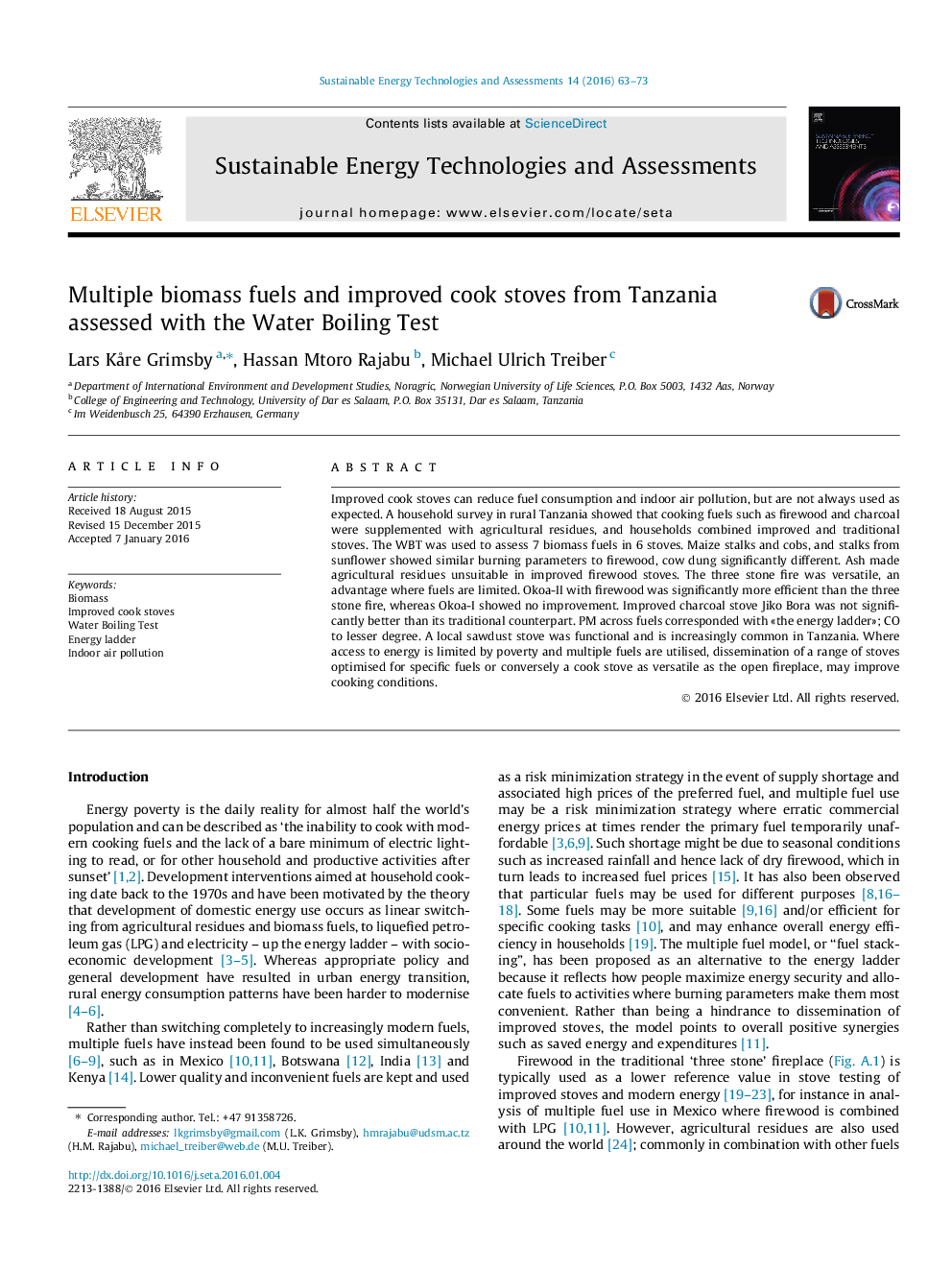| Article ID | Journal | Published Year | Pages | File Type |
|---|---|---|---|---|
| 8123007 | Sustainable Energy Technologies and Assessments | 2016 | 11 Pages |
Abstract
Improved cook stoves can reduce fuel consumption and indoor air pollution, but are not always used as expected. A household survey in rural Tanzania showed that cooking fuels such as firewood and charcoal were supplemented with agricultural residues, and households combined improved and traditional stoves. The WBT was used to assess 7 biomass fuels in 6 stoves. Maize stalks and cobs, and stalks from sunflower showed similar burning parameters to firewood, cow dung significantly different. Ash made agricultural residues unsuitable in improved firewood stoves. The three stone fire was versatile, an advantage where fuels are limited. Okoa-II with firewood was significantly more efficient than the three stone fire, whereas Okoa-I showed no improvement. Improved charcoal stove Jiko Bora was not significantly better than its traditional counterpart. PM across fuels corresponded with «the energy ladder»; CO to lesser degree. A local sawdust stove was functional and is increasingly common in Tanzania. Where access to energy is limited by poverty and multiple fuels are utilised, dissemination of a range of stoves optimised for specific fuels or conversely a cook stove as versatile as the open fireplace, may improve cooking conditions.
Related Topics
Physical Sciences and Engineering
Energy
Energy Engineering and Power Technology
Authors
Lars KÃ¥re Grimsby, Hassan Mtoro Rajabu, Michael Ulrich Treiber,
